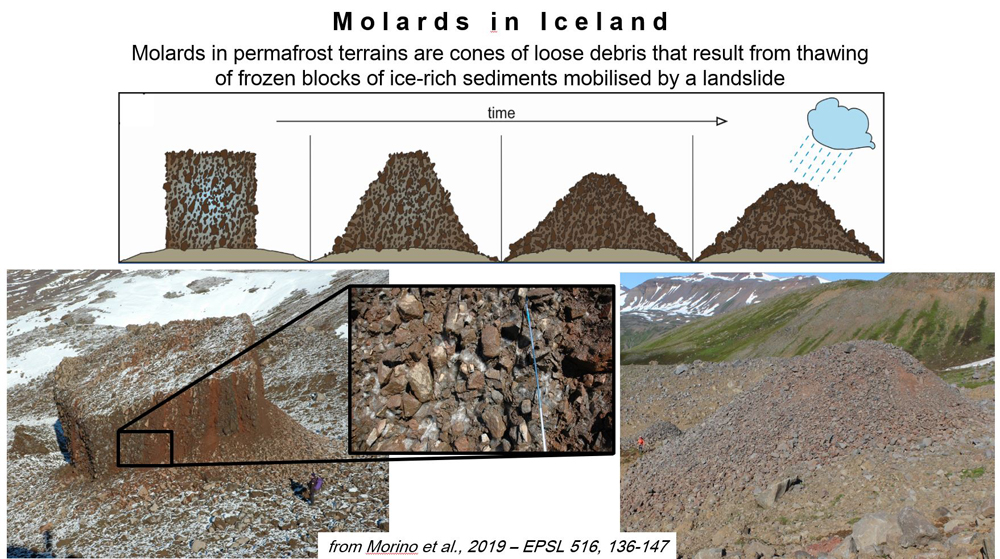Permolards project : Tracking the degradation of mountain permafrost with molards
Perennially frozen slopes occur in many mountain ranges of the world, and temperature changes in these environments have notable impacts on the state of permafrost, leading to increased slope instability and hazard from mass movements. In areas of discontinuous permafrost, these slopes can be hard to identify with certainty.
This project investigates “molards” – cones of loose debris that result from thawing of blocks of ice-rich sediments mobilised by landslides in permafrost terrains. Molards are an understudied landform and have recently been shown to be an indicator of recent and ongoing permafrost degradation. In addition, they have spatial and geomorphic characteristics that reveal the dynamics of large mass movements.
The PERMOLARDS project aims to build on these exciting new results and use molards as a geomorphological tool to understand climate change and natural hazard. We will use a multidisciplinary combination of field investigation, dating, laboratory and numerical simulations, modelling and remote sensing analysis to understand molard formation, evolution, morphology, longevity, and their environmental settings.

We will explore three unique case studies in Greenland, Canada and Iceland, where we have identified with certainty molards that formed under climatic conditions from the Holocene to the present in a variety of geographic settings.
We will constrain the morphological degradation of molards in space and time by using a morphological approach and novel luminescence dating techniques.
We will define the range of material properties and ice configurations under which molards can form through field investigations and through simulation via analogue models in a laboratory cold room. Based on these results ancient molards can then be used to infer ground-ice contents. We will establish the baseline criteria to distinguish molards from other mounds in landslide deposits using remote sensing and field data that can be used by other researchers.
We will use 3D numerical models to assess the potential role of thaw fluids in molard-hosting landslides in modifying the flow behaviour and its impact on hazard.
We will monitor and model the state of permafrost at the field site in Greenland to ascertain the state of permafrost degradation represented by molards in new and recent landsides.
Finally, we will establish the use of molards as a geomorphological tool to track permafrost degradation in time and in different geological and geographical settings around the globe. By developing these actions, the project provides insights into permafrost degradation in space and time, and the hazard posed by landslides in cold environments.
The project coordinator is Susan Conway, Researcher CNRS.


